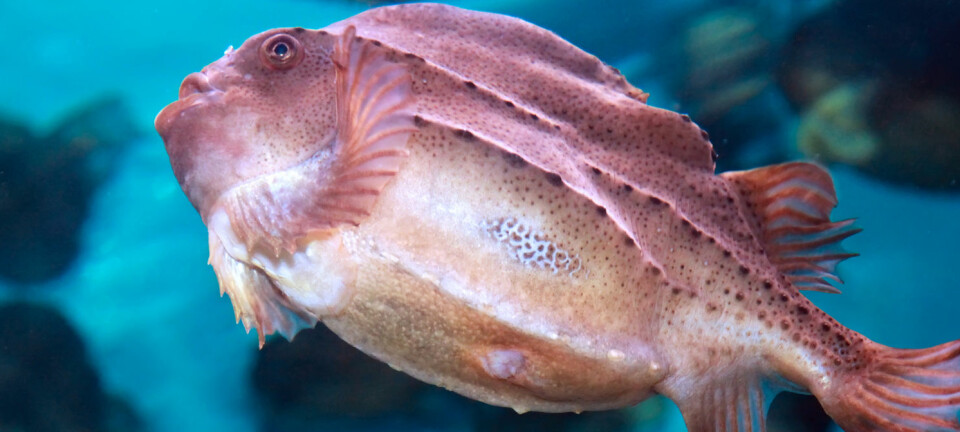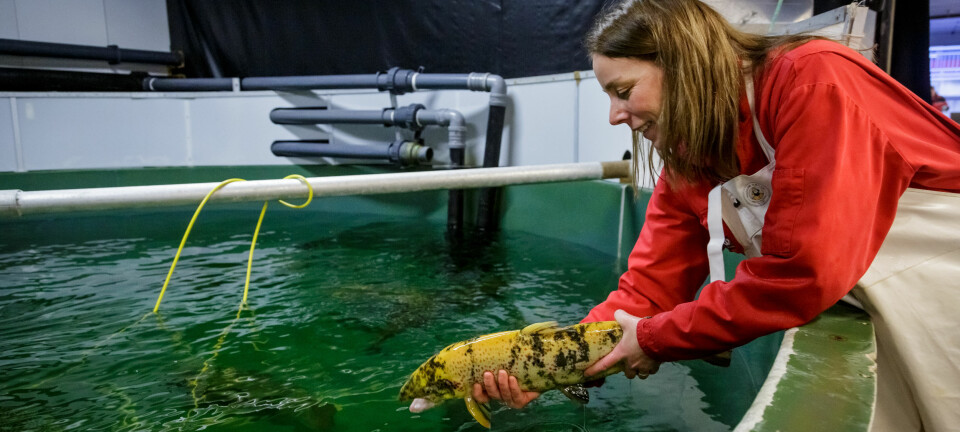
How healthy and climate friendly is Norwegian farmed salmon?
Swedish researchers have assessed one of Norways most important export products, farmed salmon, in a new report.
Swedes love salmon. And almost all the salmon they eat comes from Norway.
But just as in Norwya, farmed salmon has been hotly debated in the Swedish media in recent years.
In 2019, the Swedish magazine Filter announced its investigative report on Norwegian farmed salmon like this:
“Ninety-seven per cent of the salmon we eat in Sweden is farmed and from Norway. Farmed salmon are fed food that contains heavy metals and toxins. Tens of thousands of tonnes of pesticides are used to combat diseases and pests. In addition, the fish farms themselves kill shellfish and cause eutrophication.”
Three issues
The Swedish Fisheries Association therefore asked the independent state research institute RISE to take a closer look at Norwegian salmon.
“Many of the media reports have been negative about Norwegian farmed salmon. We have therefore chosen to look at the issues that have been the most hotly debated: health effects, unwanted substances and climate footprint,” said Elinor Hallström, one of the researchers behind the report.
Hallström was responsible for addressing health-related questions.
The researchers conducted a literature review of recent research on these three topics.
They have also relied on data from European and international authorities.
Nutrient levels down
One of the common claims in this debate is that farmed salmon isn’t actually that healthy to eat, because salmon feed now contains a much higher percentage of vegetable ingredients than it used to.
“It’s true that the composition of the feed has changed a great deal in recent years, and has become much more plant-based, which has affected the nutritional content. In particular, levels of Omega-3 fatty acids, selenium and vitamin D have decreased,” Hallström said.
But the overall levels of these important nutrients are still high.
When the researchers compared salmon with meat from pork, cattle and chicken, they found that salmon is higher in terms of many important nutrients.
“When it comes to iron and zinc, animal meat is higher. But farmed salmon beats animal meat when it comes to Omega-3 fatty acids, vitamin B12, vitamin D, iodine and selenium,” Hallström said.
Dioxins add an element of uncertainty
Although farmed salmon should still be considered healthy from a nutritional standpoint, it’s also an important source of substances that we don’t necessarily want to consume, like dioxins.
These are environmental pollutants that accumulate in the body. Consuming foods that contain dioxins over the long term can lead to a weakened immune system, reduced fertility, increased risk of developing cancer and changes in hormonal balance.
The transition from fishmeal and fish oil to more plant-based feed has led to lower dioxin levels in farmed salmon, the researchers found.
But dioxins are still something that we should pay attention to, Hallström said.
“Oily fish, including salmon, account for half of the consumption of dioxins in Sweden,” she said.
“It has previously been said that the positive health effects of eating oily fish in general outweighed the risks from dioxins. But now authorities are reconsidering the documentation on this issue,” she says.
Norwegian study shows the same
Ole Jakob Nøstbakken is a researcher at the Institute of Marine Research in Bergen. He was involved in a new study where researchers reviewed a great number of analyses on nutrients and environmental toxins in salmon, mackerel and herring.
He believes that the Swedish results are in line with what he and his colleagues described in their article.
Nøstbakken and his colleagues found that all three fish species are good sources of vitamin D and Omega-3 fatty acids, but that they also contain unwanted substances that can contribute to exceeding recommended consumption limits.
New reviews
In 2018, the EFSA, the EU's food safety agency, issued a new assessment of dioxins and dioxin-like PCBs.
They recommended that the weekly consumption limit for these substances be reduced. This limit represents the weekly amount a person can ingest of these substances over a lifetime, without it being harmful to that person’s health.
Today, the Norwegian dietary advice for seafood is to eat two to three meals of fish a week. At least 200 grams should be oily fish such as salmon, trout, mackerel or herring.
“With the dietary advice we have in Norway today, if people eat the recommended amounts of fatty fish, they’ll exceed this new European consumption limit. At the same time, there are many important nutrients in these species, which shows that there is a need for a new risk-benefit assessment,” Nøstbakken said.
The Norwegian Scientific Committee for Food and Environment (VKM) is also assessing the importance of fish in the Norwegian diet, with a view to risks and benefits. The committee carries out independent risk assessments for the Norwegian Food Safety Authority (Mattilsynet) and the Norwegian Environment Agency (Miljødirektorat).
A risk-benefit assessment takes into account both nutrients and environmental toxins and assesses whether it is a net benefit for individuals to eat a food or not. The Norwegian Food Safety Authority will use the assessment to update its advice and warnings about fish consumption for the Norwegian population.
New limit values can have consequences
The EU Commission is now evaluating the current value limits.
If the values are set significantly lower than they are today, it could ultimately affect trade in fatty fish, like salmon, Nøstbakken said.
“But today, salmon is well below the limit values. In fact, it is lower than many other fatty, wild-caught fish,” he said.
In wild-caught salmon from the Baltic Sea, dioxin levels are 10 to 20 times higher than farmed salmon from Norway, Friederike Ziegler said in an interview with svt.se, which is the website for Sveriges Television, the Swedish public service television company.
She was responsible for the section of the report that addressed unwanted substances and climate footprints.
Low antibiotics, pesticides and heavy metals
People have voiced concerns in both Norway and Sweden about levels of antibiotics, pesticides and heavy metals in salmon.
The Swedish researchers said that levels of these substances in salmon were low enough that they did not believe they posed any health risks.
“When it comes to pesticides, levels increased after the amount of vegetable matter in salmon feed was increased. But the levels are so low that they are undetectable in a salmon fillet,” Hallström says.
Low climate footprint
The Swedish researchers also assessed the climate footprint associated with producing Norwegian salmon. This has also been an issue in Sweden.
Some people have maintained that farmed salmon is one of the worst when it comes to greenhouse gas emissions.
The researchers found that Norwegian salmon has increased its climate footprint in the last decade. It has a somewhat higher climate footprint than Swedish-produced chicken and pork. But compared to similar meat products produced in Europe, the climate footprint is lower.
And farmed salmon have a significantly lower climate footprint than red meat.
The researchers noted, however, that they did not investigate issues related to animal health, animal welfare, eutrophication or the effect of farmed salmon on wild salmon.
Translated by: Nancy Bazilchuk
Source:
Elinor Hallström, Friederike Ziegler, Maria Åberg: Näringsinnhåll, oönskade ämnen och klimatavtryck av odlat lax – en vetenskaplig sammanställning. (Nutritional content, unwanted substances and climate footprints of farmed salmon - a scientific compilation). Report from RISE Institute of Sweden, 2020.
———
Read the Norwegian version of this article on forskning.no

































